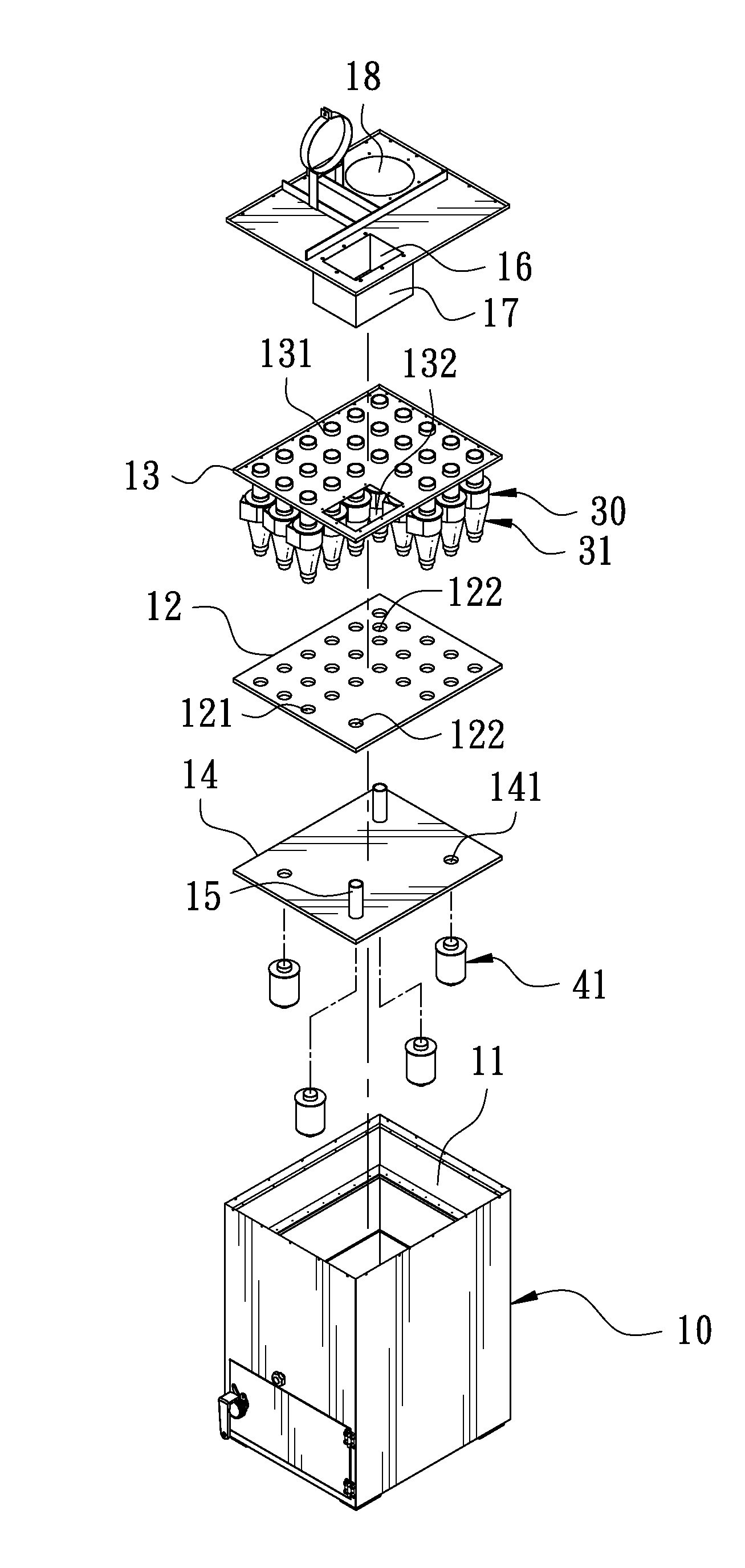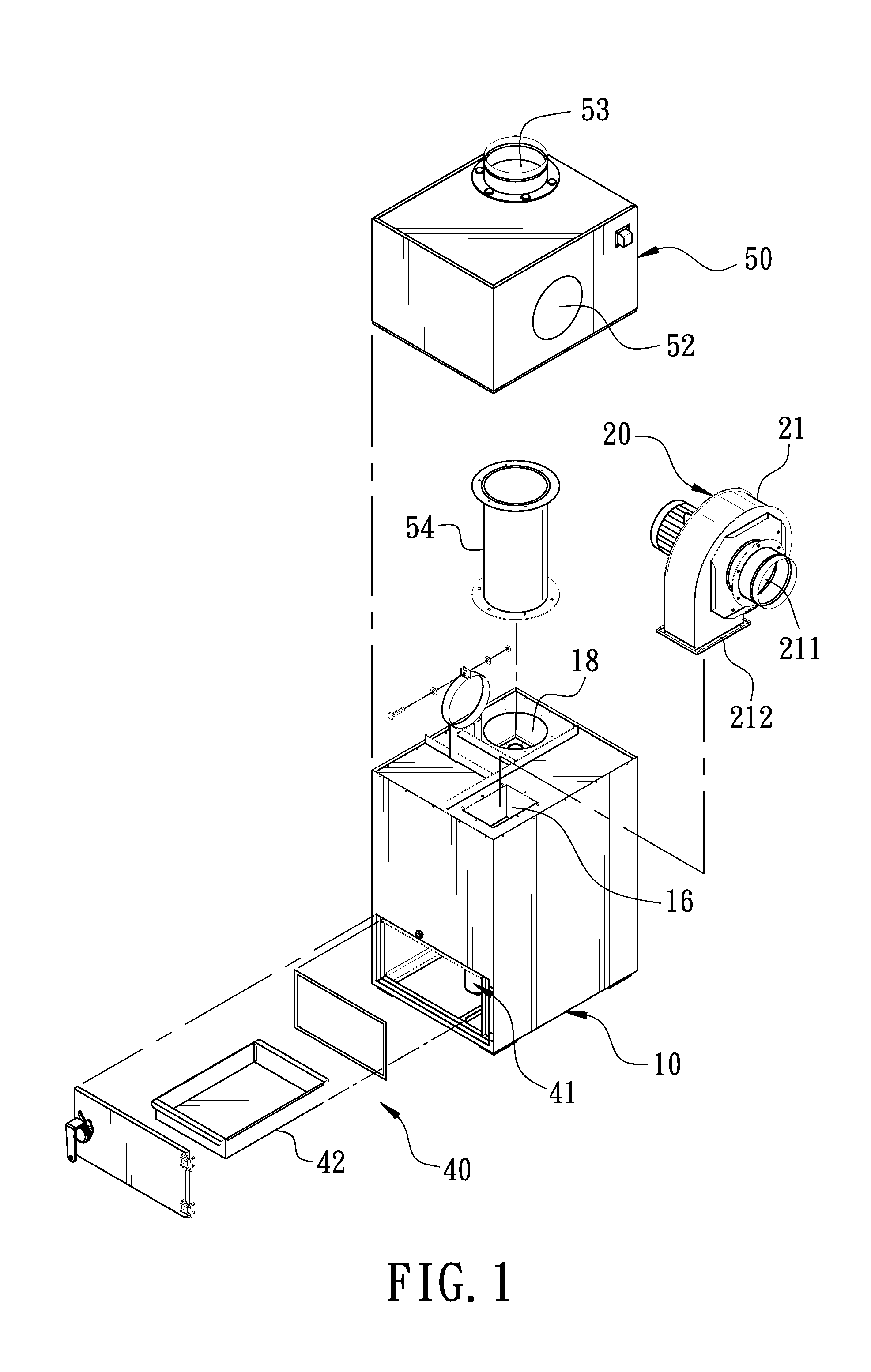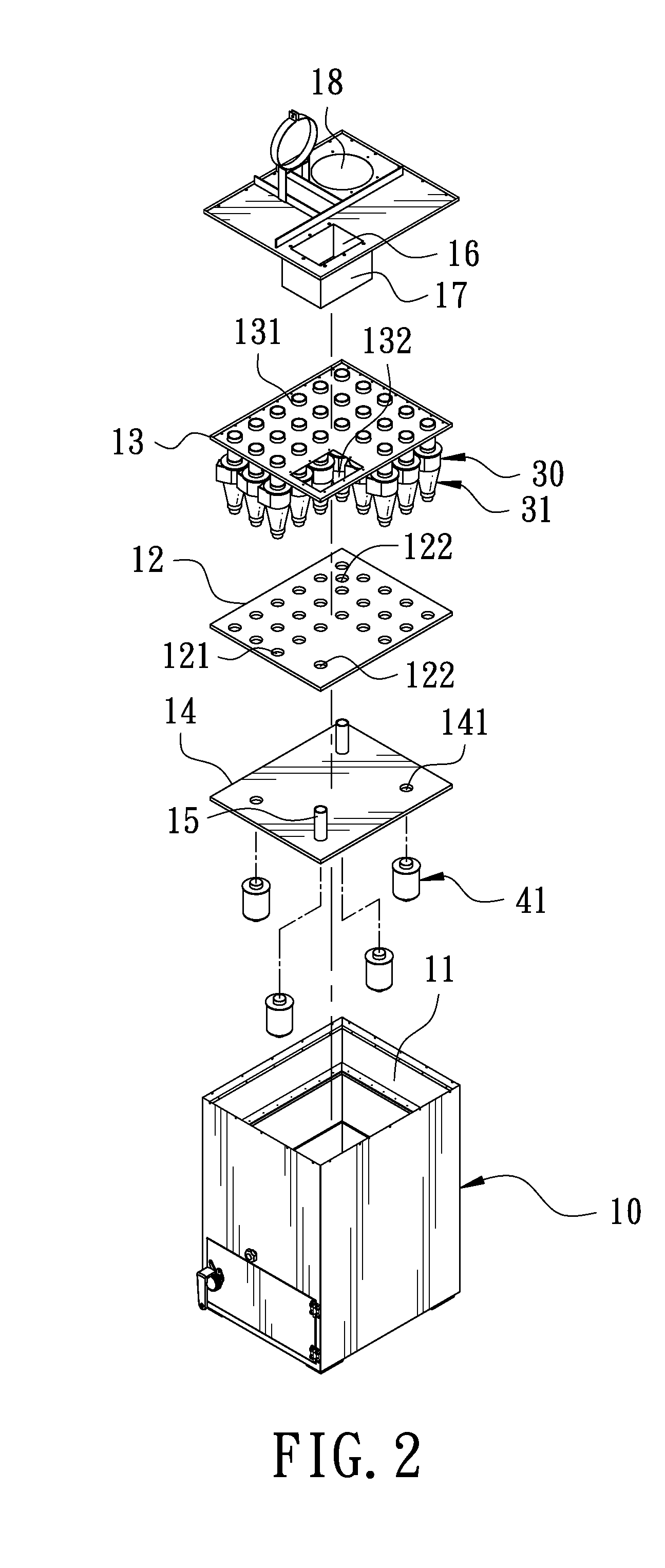Oil mist separator
a technology separator body, which is applied in the field of oil mist separator, can solve the problems of serious environmental harm, large lampblack, and large oil mist, and achieve the effects of low volume, simple profile and easy assembly and repair
- Summary
- Abstract
- Description
- Claims
- Application Information
AI Technical Summary
Benefits of technology
Problems solved by technology
Method used
Image
Examples
Embodiment Construction
[0014]Now, the present invention will be described more specifically with reference to the following embodiments. It is to be noted that the following descriptions of preferred embodiments of this invention are presented herein for purpose of illustration and description only; it is not intended to be exhaustive or to be limited to the precise form disclosed.
[0015]With reference to FIGS. 1 and 2 and with cross reference to FIG. 3 shown respectively as a 3D exploded view of an oil mist separator according to this invention, a 3D exploded view of the body, and a sectional view of the body, the oil mist separator mainly comprises a body 10, an air intake unit 20, a filtering unit 30, and an oil collection unit 40.
[0016]A container 11 is formed in the body 10, and a first spacer 12 and a second spacer 13 are formed and pile in an inner layer of the container 11 to form an exhaust chamber 111, a filtering chamber 112, and an oil collection chamber 113 from top to bottom in the container ...
PUM
| Property | Measurement | Unit |
|---|---|---|
| diameter | aaaaa | aaaaa |
| mass | aaaaa | aaaaa |
| volume | aaaaa | aaaaa |
Abstract
Description
Claims
Application Information
 Login to View More
Login to View More - R&D
- Intellectual Property
- Life Sciences
- Materials
- Tech Scout
- Unparalleled Data Quality
- Higher Quality Content
- 60% Fewer Hallucinations
Browse by: Latest US Patents, China's latest patents, Technical Efficacy Thesaurus, Application Domain, Technology Topic, Popular Technical Reports.
© 2025 PatSnap. All rights reserved.Legal|Privacy policy|Modern Slavery Act Transparency Statement|Sitemap|About US| Contact US: help@patsnap.com



